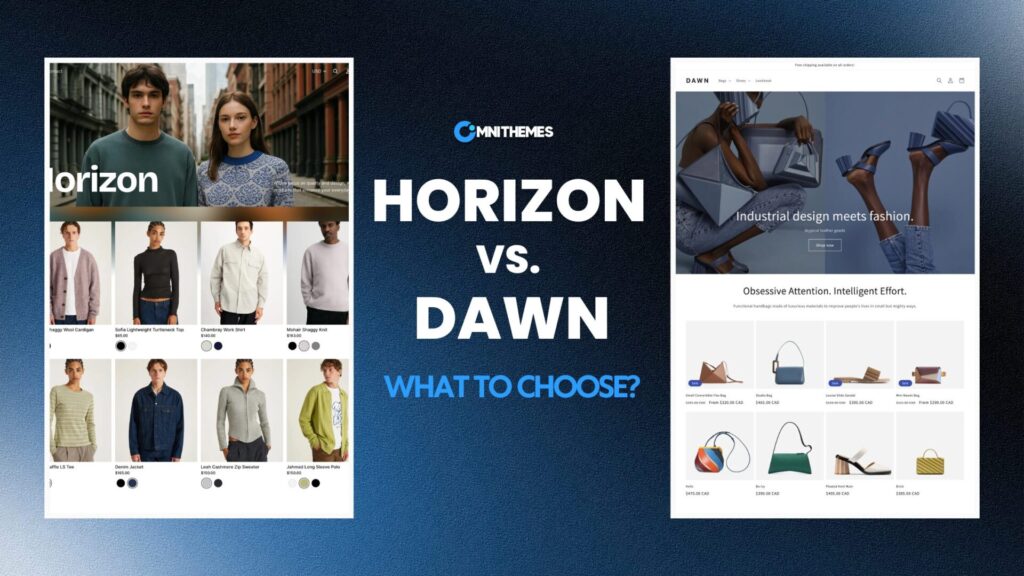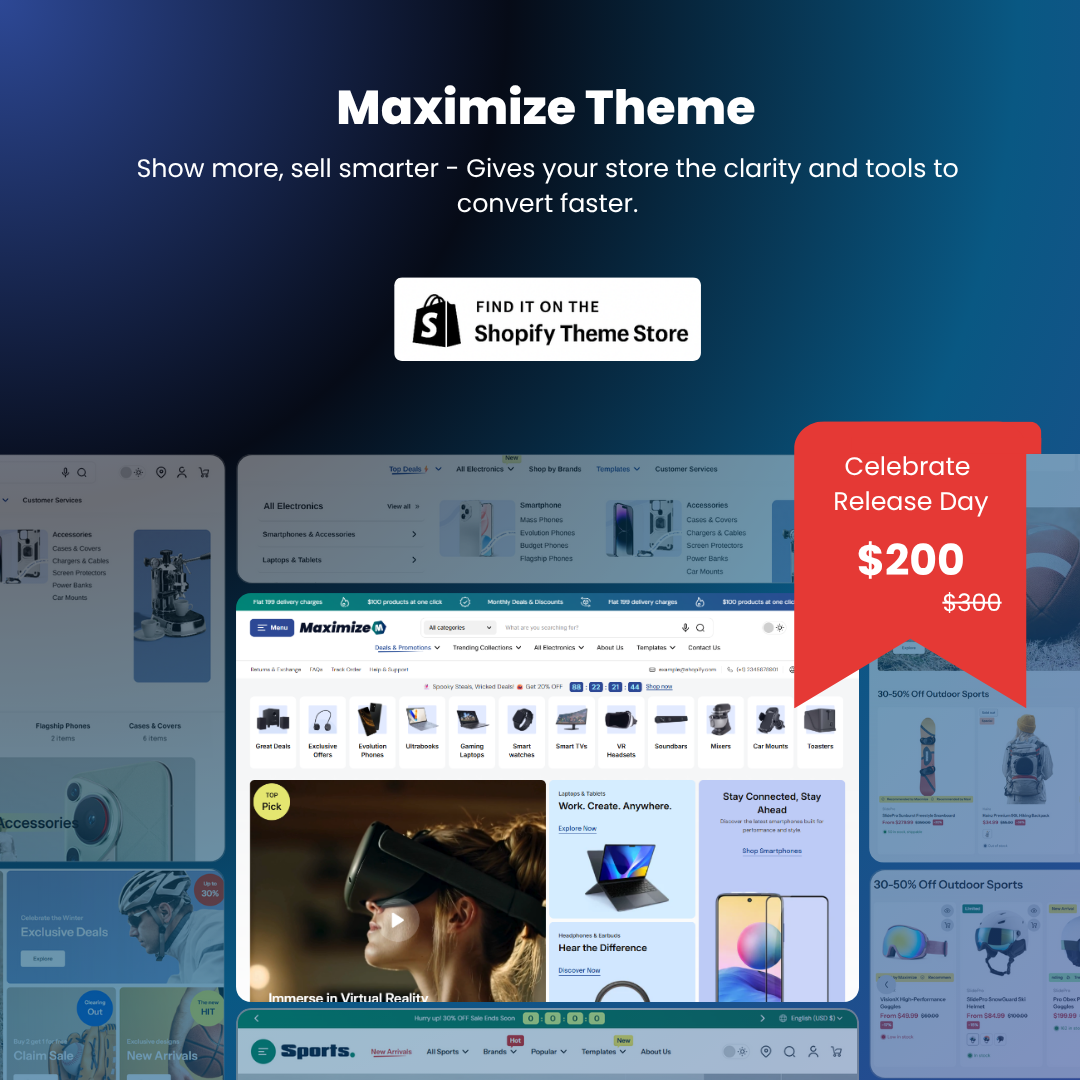You’re scrolling through a Shopify store for inspiration, and BAM – this one store is really crushing it. The layout, the vibe, the speed, and the design? – Everything just feels right. It’s like it was built by mind readers who know exactly what your customers crave. You lean in, squint at the screen, and whisper to yourself: “What Shopify theme is this? I need that magic on my site.”
You’re not alone. That’s a question countless store owners, designers, and competitors ask every single day. And today, you’re going to learn exactly how to answer it – no fluff, no mystery, just clean techniques and insight. Stop guessing at designs; instead, spy on winners. Today, we’re flipping that script. We’ll uncover every method to detect “what Shopify theme is this,” from quick hacks to deep dives. And by the end? You’ll have more ammunition than those basic “theme detector” blogs – and you’ll even see a theme I like (shameless plug ahead) that you might want to try.
What Shopify Theme is this? – 3 simple methods to findout!
Method 1: Online Detectors – Zero Install, Instant Gratification (Easy)
Laziest method? Paste and pray. These web tools scrape the URL for theme deets – no downloads, no fuss.
What are some online Shopify theme detector tools to use?
- Shopthemedetector.com
- Meetanshi.com/shopify-theme-detector
- Pipiads.com/tools/shopify-theme-detector
- Shopscan.app
- Bonus: BuiltWith.com – Free tier scans tech stack, including themes.
To use those tools, just copy the URL of the store you want to detect and paste it into the search bar, hit enter, and you will have the information you want.

Method 2: Chrome Extensions – Your Pocket Sherlock Holmes (Medium)
Why sweat the source when extensions do the heavy lifting? These bad boys scan in seconds, spitting out theme names, IDs, and even store links. Over 90,000 users swear by ’em for daily recon.
Here are the top three built-in extensions that help you answer the question “What Shopify theme is this?” quickly:
- Koala Inspector (Our favorite tool): Install from Chrome Web Store, pin it, hit a store, click the icon. Popup magic: Theme name, price, demo. If it’s not “Custom,” one-click to Shopify’s store.
- Shopify Theme Detector by Meetanshi: Free, 100% accurate in 5 seconds. Paste URL or browse – boom, theme + link. Handles third-party customs like a champ.
- Shopify Theme Detector by BSS Commerce: Lightweight, easy to find.
Bonus: Wappalyzer – Broader tech stack detector, flags Shopify + theme as a side hustle.
These extensions can detect themes that are outside of the official channel (Shopify Theme Store). It’s also very simple to use these extensions. Every time you visit a Shopify store that you want to spy, just tap on the extension icon on the browser bar to activate it.
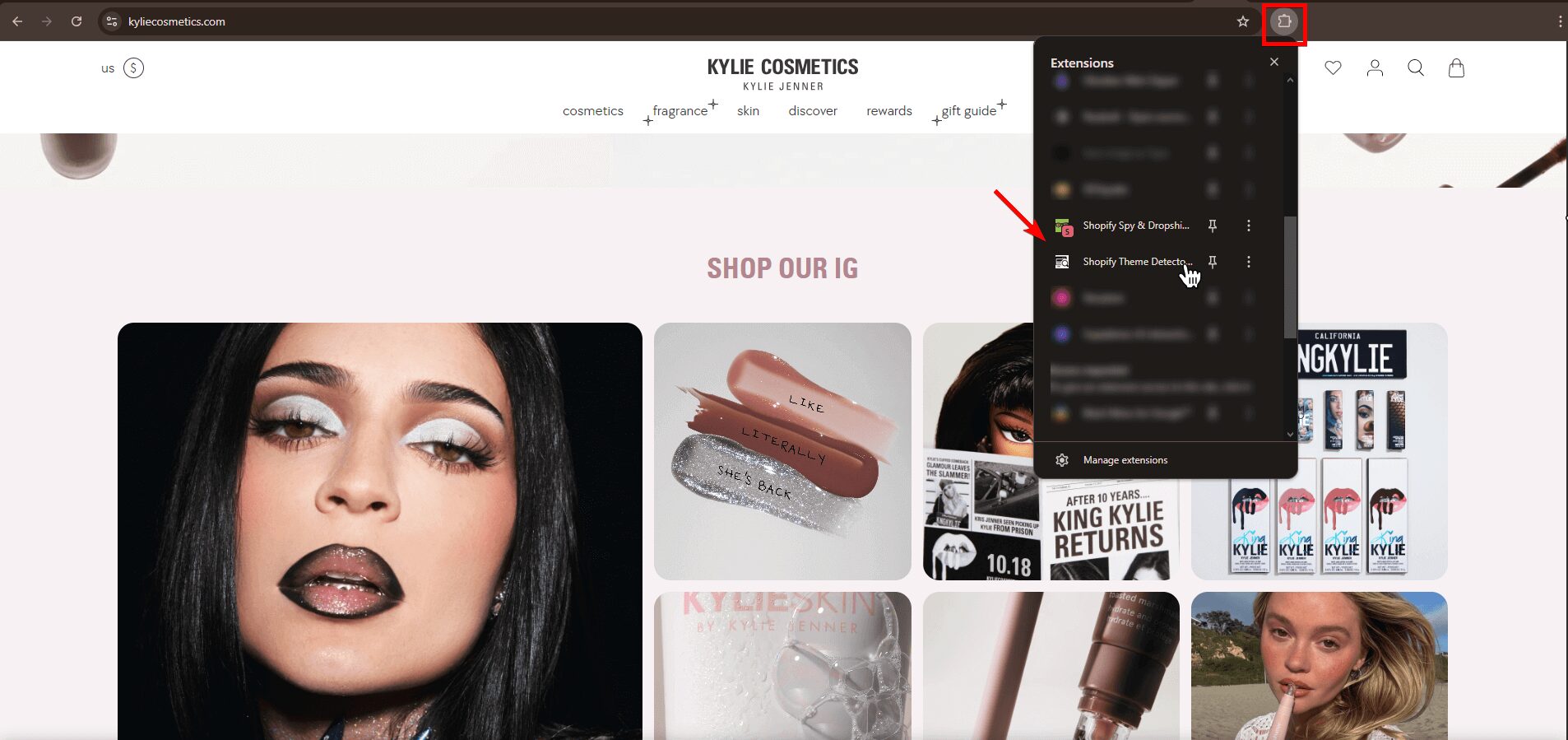
Method 3: Scan the Source Code – Manual Detective Work (Advanced)
This is the foundation. Every Shopify site you visit has underlying HTML, CSS, and JavaScript. And it’s universal – works on Chrome, Firefox, Edge, Safari – and it’s dead accurate 90% of the time.
Step-by-Step Breakdown on How to see what Shopify Theme another store is using?
- Visit the Target Store: Head to the Shopify site you’re eyeing. Make sure it’s live – no previews or staging URLs.
- Open the Source: Right-click anywhere on the page and hit “View Page Source.” Or use the shortcut: Ctrl + U (Windows/Linux) or Cmd + Option + U (Mac on Safari).
- Hit Ctrl + F (Cmd + F on Mac) to open the find box. From here, you will have 2 ways to find:
- Option A: Search “Shopify.theme” – quick and straightforward
- Type “Shopify.theme” and smash Enter. You’ll spot three hits usually.
- Pay attention to the part after “schema_name“. That’s your theme name.
Note: Previously, the theme name was shown after the “name” part; some older versions might still list the theme at that location. Make sure you check that part as well.
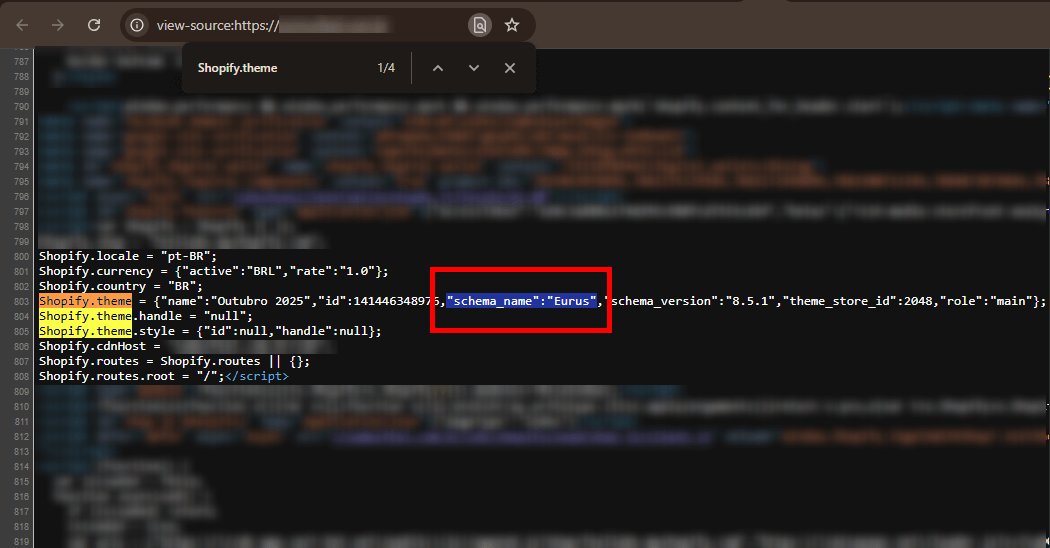
- Option B: Search “theme_store_id” – for sneaky (modified name)?
- Back to find: Type in “theme_store_id.”
- Grab that number (e.g., 887). This is the official ID if it’s from the Shopify Theme Store. Cross-reference it with the table below to find out what ID represents for which theme.
Note: Got an ID not listed here? Google “Shopify theme ID [number]” or check out this useful resource for more theme IDs.
| Theme Store ID | Theme Name | Theme Store ID | Theme Name | |
|---|---|---|---|---|
| 838 | Empire | 2048 | Eurus | |
| 887 | Dawn | 855 | Prestige | |
| 730 | Brooklyn | 857 | Impulse | |
| 796 | Debut | 714 | Focal | |
| 1891 | Spotlight | 847 | Motion | |
| 304 | Responsive | 871 | Warehouse | |
| 847 | Motion | 1657 | Enterprise | |
| 2053 | Vision | 1615 | Yuva | |
| 380 | Minimal | 902 | Expanse | |
| 568 | Symmetry | 739 | Pipeline | |
| 790 | Ira | 777 | Palo Alto |
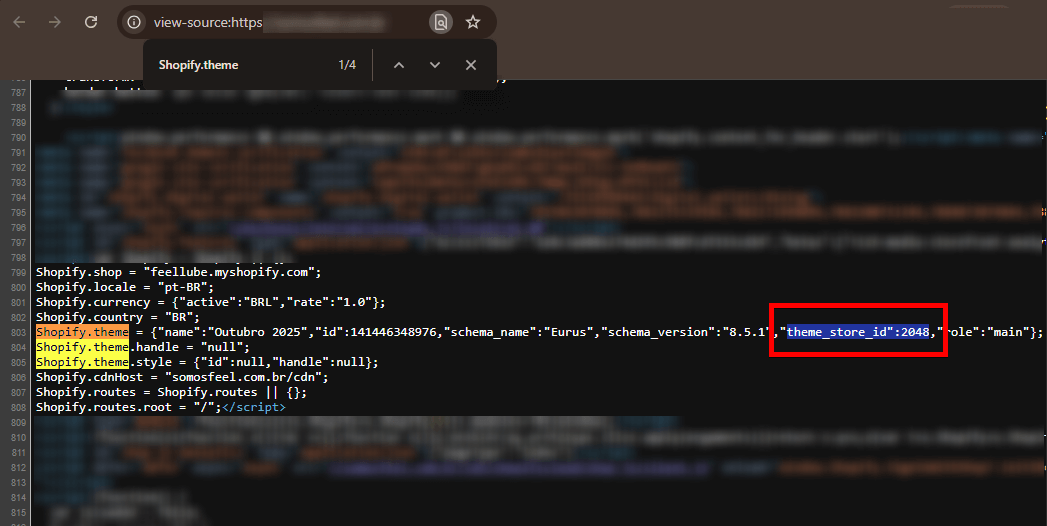
- If the Shopify theme store ID shows “null”? That means it’s a custom theme – unbuyable from Shopify’s store. However, you still can look at them for a great source of inspiration.
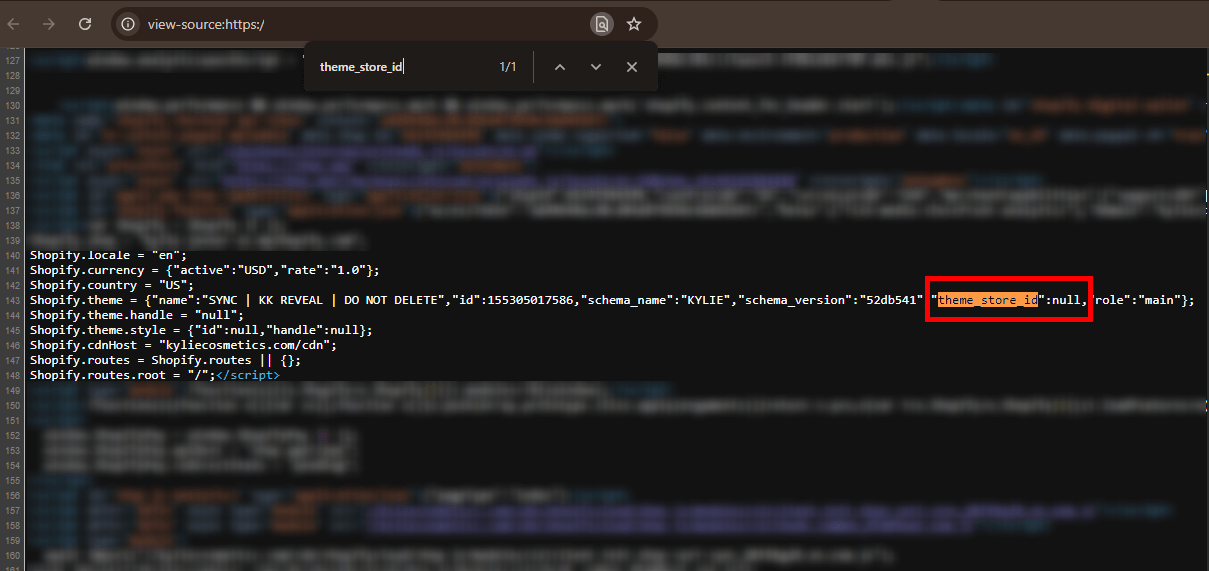
Why should you see what Shopify Theme another store is using?
Finding a store’s theme isn’t just geeky fun – it’s market research on steroids. Knowing what theme a Shopify store uses is like getting the blueprint to a competitor’s house. You can see structure, spacing, typography, features, and maybe copycats — but you can’t see the plumbing of their secret sauce (apps, custom code, special scripts). Still, seeing the bones is extremely powerful.
Use cases:
You see a store doing well, and want the same feel.
You’re studying design trends.
You want to avoid a theme that looks gorgeous only after heavy customization.
You want to vet whether a shop’s speed or look is due to theme or aftermarket hacks
A pro tip: Don’t stop at the theme name. Dig deeper: Check how they layer apps for upsells, optimize images for lightning speed, or tweak fonts for that “premium” feel. Tools like Google PageSpeed Insights can reveal if their secret is a featherweight theme or just smart compression. Remember, a theme’s just the skeleton – flesh it out with high-res product shots, snappy copy, and trust badges, and watch your cart abandonment plummet.
Why can’t I find the Shopify theme other store is using?
You have tried so many different methods, but cannot find the theme name. It is because the store owner takes a step ahead to hide themselves. Here’s how:
Name obfuscation: Developer removes or alters
Shopify.theme.nameNull theme_store_id: Hides public mapping
Heavy customizations: The theme’s visuals diverge heavily from its native form
Private/custom themes: Built from scratch — no public version
Minified/obfuscated code: Makes source scanning hard
So even when you see “custom,” that doesn’t mean it’s worthless. It just means a clean theme might help you replicate the look faster.
Beyond Detection: What to do next?
Got the theme? Don’t just install and pray. Audit it: Does it match your niche? (E.g., foodies need drool-worthy galleries.) Test responsiveness – Google’s mobile-first indexing doesn’t forgive slow loads. And checkout? If it’s clunky, 75% of visitors ghost you.
Watch for traps: Custom tweaks mean your install won’t be a clone – add your images, apps (but cap at 10 to dodge speed kills), and SEO juice. Legally? Identifying’s fine; straight-up copying logos? That’s a lawsuit sandwich. NULL ID? Custom theme – inspired by it, but build your own twist.
If you’re building a Shopify store and want a theme that gives you flexibility, speed, and future-proof architecture, I encourage you to check out the Eurus Theme (buy 1 get 5 presets: Eurus, Whiff, Swirl, Breath, Breeze) from Omni Themes. Over 5,000 stores already run on this theme because it bends, flexes, and performs like a champ. And get this — it’s paying you back during BFCM. Yep, up to 20% cashback for doing what smart sellers do anyway: investing in a theme that works.
FAQ: Questions around detecting your Shopify theme.
Q: What is a Shopify Theme?
A Shopify theme is a design template — the layout, styles, templates, and UI structure that dictates how a Shopify store looks and behaves (navigation, collections, product pages, etc.). It doesn’t include backend logic, app features, or content (products, images, business logic).
Q: Are Shopify Themes a One-Time Purchase?
Often yes. Many themes (especially those in the Shopify Theme Store) are sold under a one-time license with lifetime updates. For instance, when you buy Eurus, you unlock all its presets (Eurus, Whiff, Swirl, Breath, Breeze) and get lifetime updates and support. If you get the theme from another place (such as ThemeForest), always check the theme’s license terms: some developers or marketplaces may charge extra for major upgrades, extra stores, or additional support.
Q: How Do I Copy Someone’s Shopify Theme Exactly?
You can’t (legally or technically) without their backend access. But snag the name, install it, then mimic layouts with CSS tweaks. Steer clear of IP theft—focus on inspiration, not imitation.
Q: Can I legally use the same Shopify theme as another store?
Yes — as long as you acquire the theme legally (purchase or download from a marketplace) that allows such use. Shopify’s themes are not exclusive to one merchant (unless custom-built). Just avoid copying logos, branding assets, or proprietary content from the other store.
Q: What if the theme is completely custom (undetectable)?
Then you’ll often seetheme_store_id: null, no matching name, or get an uncommon name from detection tools. In that case:
Study the layout and features
Use a strong base theme and rebuild similar parts
Always aim to keep your code clean and modular
Reverse-engineer visuals via screenshots or dev tools
Consider hiring a developer to replicate desirable parts
Q: How accurate are the theme detectors?
They are highly accurate for themes that leave detection footprints. But customizations or obfuscation reduce accuracy. Always double-check manually or via code inspection. Use detectors as a first pass, not the final word.
Q: Can These Methods Work on Non-Shopify Sites?
No, extensions and tools flag ’em as “Not Shopify.”


